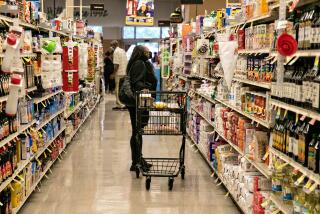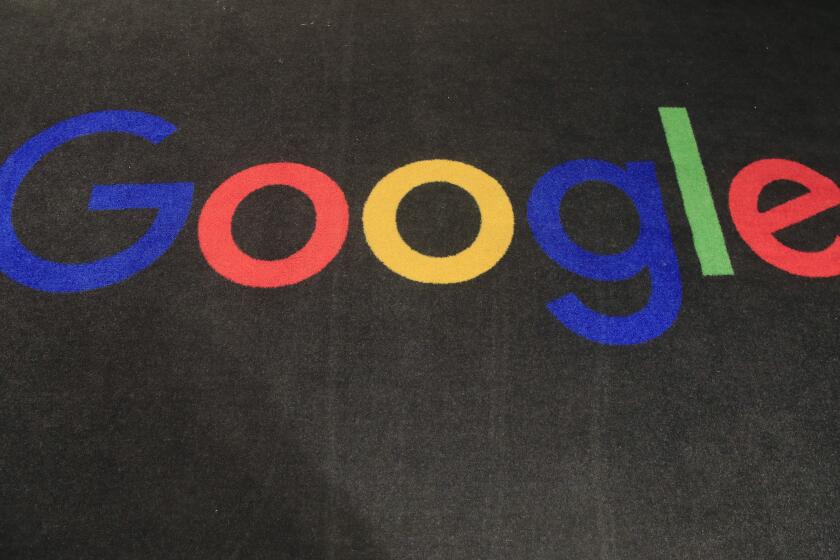Amazon is buying more than Whole Foods — it’s getting 460 stores it can turn into warehouses and showrooms

Amazon said it is buying Whole Foods Market in a deal valued at about $13.7 billion, including debt. (June 16, 2017) (Sign up for our free video newsletter here http://bit.ly/2n6VKPR)
- Share via
Amazon can ship books, furniture and clothing across the Pacific Ocean in what feels like a blink of an eye. But when it comes to delivering fresh groceries to your doorstep, the e-commerce giant’s logistical prowess wilts like a bag of salad left out in the sun.
That’s because the long journey of, say, an avocado from Mexico gets progressively harder the closer it gets to the final consumer. It’s more costly and time consuming to deliver individual pieces of fruit to many customers. The hurdle, which has long vexed online retailers and is one of the chief reasons the grocery business is notorious for its low profit margins, is known in the logistics industry as the “last mile.”
By acquiring Whole Foods, Amazon is buying not just an established, upscale supermarket brand, but also a vast distribution network of warehouses and more than 460 stores worldwide — replete with back rooms and cold storage — in some of the most affluent ZIP codes in America. That’s a significant boost in numbers for the Seattle company, which currently operates fewer than 100 distribution centers in the U.S., a handful of them in the Inland Empire.
More hubs means quicker and fresher delivery, which will bolster Amazon’s existing grocery delivery service, AmazonFresh. The service, which is offered to the company’s subscription Prime members for a monthly fee of $14.99, is available only in about 20 U.S. cities. While the bid for Whole Foods may not bridge Amazon’s “last mile,” it certainly brings it closer, experts say.
In the U.S. “this adds 440 refrigerated warehouses within 10 miles of probably 80% of the population,” said Michael Pachter, an analyst for Wedbush Securities. “More importantly, it puts refrigerated distribution within 10 miles of probably 95% of Prime members. That means we can rely upon Whole Foods’ consistently high quality meat and produce, and can rely upon prompt delivery from the store as a distribution point.”
The marriage of the two companies means Amazon can vertically integrate a business it has dabbled in since 2007, when it first offered grocery delivery in Mercer Island, Wash. That’s a blow to rivals like Target and Walmart, which boasted brick-and-mortar stores as the one thing they had over Amazon. The physical stores allow people to try on clothing before buying, still one of the biggest hang-ups about online fashion, and they allow shoppers to choose the groceries they want, lest there be a bruised apple in their order.
Those big-box competitors were already disadvantaged by Amazon’s captive audience, an estimated 80 million Prime members, who could theoretically order groceries online or task Alexa, Amazon’s virtual assistant, to prepare a delivery or arrange for a pick-up at the nearest Whole Foods.
The deal could also make competing delivery services such as Instacart — which Whole Foods invested in last year — superfluous. Why pay for food delivery elsewhere if Amazon is cheaper and easier?
It’s a natural progression for Amazon, said Brendan Witcher, a retail analyst at Forrester. The e-commerce behemoth first disrupted retail by offering lower prices. Now it’s focusing on “logistics and fulfillment and the ability to get what you want when you want it,” Witcher said.
To that end, Amazon is encroaching on territory long dominated by the likes of UPS, FedEx and the U.S. Postal Service. In the last two years, the tech giant has leased 20 Boeing 767 air cargo jets from Atlas Air Worldwide Holdings, won shipping licenses that allows it to pay for containers at wholesale rates and rent them out for more expensive retail rates, and added thousands of long haul trucks emblazoned with the Amazon logo.
Jeff Bezos, Amazon’s founder and chief executive, said his company wasn’t looking to replace legacy supply chain companies. Instead, Amazon is adding its own logistics network because it simply can’t have enough — not surprising considering the company was responsible for 43% of all online sales in the U.S. last year.
“We will take all the capacity that the U.S. Postal Service can give us and that UPS can give us and we still need to supplement it. So we’re not cutting back. We’re growing our business with UPS. We’re growing our business with the U.S. Postal Service,” Bezos said at Recode’s 2016 Code Conference in Rancho Palos Verdes, according to Bloomberg.
Analysts say there’s no reason to think Amazon’s deal with Whole Foods will be limited to groceries. The company could one day use Whole Foods locations as a place for customers to drop-off e-commerce returns and make exchanges for items bought online. The stores could also serve as a hub to pick up non-grocery items, a move that would pare delivery costs and provide an alternative for shoppers who don’t want their packages lying unattended on their porch.
“Ultimately, we see the deal allowing Amazon to take further share of its customer’s wallet and see a large opportunity to leverage many of its technologies to grow and optimize the Whole Foods business. We are also highly confident that Amazon will leverage the new store footprint for much more than just selling groceries,” said Daniel Salmon, an analyst for BMO Capital Markets.
The $13.7-billion deal for the high-end supermarket chain could pay off quickly, but it still runs counter to trends in the tech world, where fixed assets like real estate and heavy equipment are shunned, said Amit Sharma, a former supply chain executive at Walmart and now chief executive of Narvar, a retail app.
“Look at companies in the sharing economy. You don’t need to own assets long term,” Sharma said.
But other experts see advantages to buying Whole Foods beyond just its array of gourmet and organic food, and access to the affluent customers who favor it.
Groceries can serve as a lure — one that consumers can’t live without — which could result in more sales of Kindle e-books and other high-margin goods that could find their way onto Whole Foods’ shelves.
“You don’t shop for appliances multiple times a week. You don’t shop for any durable goods multiple times a week. But you need to put fresh food on the table,” said Lloyd Greif, a Los Angeles investment banker and president and chief executive of Greif & Co. “That’s what drives customer traffic. The more touch points you have with a consumer, the more you’ll be able to sell them everything else. From Amazon’s standpoint, they don’t have to focus so much on making money on groceries if they make money everywhere else.”
Follow me @dhpierson on Twitter
ALSO
Remember when Amazon only sold books?
Will Amazon change the food business — or will the food business change Amazon?
More to Read
Inside the business of entertainment
The Wide Shot brings you news, analysis and insights on everything from streaming wars to production — and what it all means for the future.
You may occasionally receive promotional content from the Los Angeles Times.












